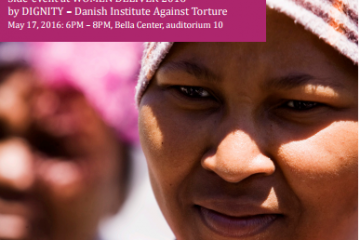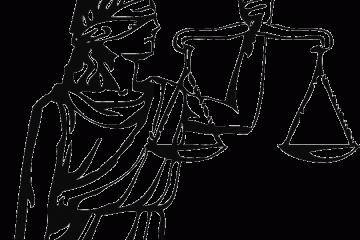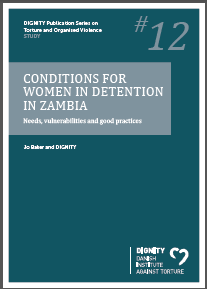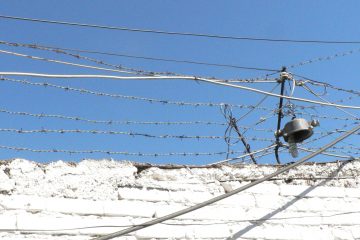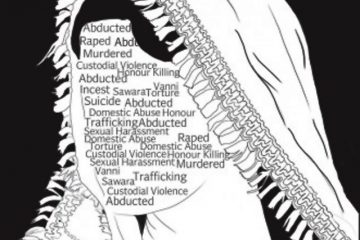On May 17 (6-8pm) I’ll be presenting on a high-level panel on the international legal framework to prevent violence against women and girls. The side event will be held concurrent to the Women Deliver 2016 plenary, this year in Copenhagen. The theme of the panel – gender and the torture framework – was inspired by the latest report by the UN Special Rapporteur on Torture, Juan Mendez, who will present at the event. It highlights the huge role that gender stereotyping plays in the downplaying of suffering of women, girls and those from LGBTI groups – to the extent that state-led or condoned crimes against them are commonly considered secondary to full ‘torture’. The session will also consider whether we need a binding convention, specifically tailored to the prevention of VAWG, as proposed by former UN Special Rapporteur on VAWG, Rashida Manjoo. As the lead researcher of a multi-country study into 11 women’s prisons, I’ll present the voices of the women I met inside these facilities,…
Advocating for the rights of women in Georgia’s criminal justice system
This month I’ve been acting as international advisor to a project by Penal Reform International, which is preparing to push for gender-specific reform in Georgia’s criminal justice system. Funded by the Open Society Foundation, the project will advocate on behalf of the 300 or so women in the country’s prison system, and all those who will come after. It will analyse criminal justice policy, practice and legislation and recommend gender-specific considerations during decision-making by judiciary and parole mechanisms, with a particular focus on the use of non-custodial measures for women who aren’t a violent risk to society. It will also raise awareness on women’s gender-specific needs in criminal justice system and the gendered negative impact of imprisonment, for them, their families, and society.
Currently most justice and correctional systems fail to take into account the factors that colour, often harmfully, women’s experiences of criminal justice and detention,…
Blog Series: Seven human rights challenges faced by women in detention
This seven-part series looks into the challenges, risks and discrimination faced by women imprisoned around the world. They have been published by: The Oxford Human Rights Hub, Essex Human Rights Centre, Inter-Press Service, Open Democracy, and Penal Reform International, and can be found aggregated on the website of DIGNITY – Danish Institute Against Torture.
They draw from my research in 2013-2014 with DIGNITY among prisons and prison communities in five countries — Albania, Guatemala, Jordan, the Philippines and Zambia — now published as a comparative report: ‘Conditions for Women in Detention: Needs, Vulnerabilities and Best Practices’, and as four country studies.
1. Vulnerabilities during admission
“The first day is the most horrible, the most humiliating.”
2. The particular impact of detention conditions
Published by Open Democracy
“These things make you feel inhuman if you concentrate on them,
so you try to forget them and accept…
Conditions for Women in Detention in Zambia: Needs, Vulnerabilities and Good practices
Dignity Publication; Series on Torture and Organised Violence No. 12 (2015) Jo Baker and DIGNITY – Danish Institute Against Torture
EXECUTIVE SUMMARY
“These things make you feel inhuman if you concentrate on them, so you try to forget them and accept life.” – Inmate
While conditions for women in Zambia’s under-resourced prison system are largely considered better than those for men, a closer look tells a different story. As a minority, it may be that various women’s facilities suffer from less (yet still chronic) congestion, are subject to lighter security restrictions, and allow more flexibility, at the discretion of the warden. Yet as revealed by this study, there is a broad, acute and harmful lack of consideration for the special needs of women in detention, in forms acknowledged by and less visible to officials and personnel in the Zambia Prison Service (ZPS or Prison Service). These gaps are detrimental to the dignity and wellbeing of female detainees and breach…
New study sheds light on women in Jordanian prisons
What are the particular needs, issues, risks and vulnerabilities that face imprisoned women in Jordan? And does the prison management comply with international standards? These questions lie at the heart of DIGNITY’s research into conditions for women in detention in five countries — of which the Jordan country study is one part.
The strong social norms and forms of discrimination that women face in Jordan reach deep into places of detention, and their experience of being detained. To be a detained woman here, in many cases, is to lose touch with the majority of your family members and your children despite an acute need for intimate and social contact, and to feel isolated from the outside world. It is often to be heavily stigmatized by your own community, and by prison staff. It is to have likely experienced forms of gender-based violence before entering prison — some physically and mentally debilitating in the name of honour — and to not receive the help that you need in order…
Women in prison: The particular vulnerability to abuse
“You are surrounded by men and powerless. There are no women to talk for you. They want to win as men.” ― Inmate, Zambia
Written for the Essex Human Rights Centre Blog, 2014*
Despite international commitments by governments to make their prisons secure, safe and well-organized, this is aspiration (if that) rather than practice across much of the world. Sealed away from society ― its sight, and often interest or empathy ― prisoners are among the world’s most vulnerable groups. But what of the vulnerable groups among them?
With the rising number of women in custody, it has become increasingly important to acknowledge the different safety and security needs of women, and the way in which the pervasive violence and discrimination in our societies can reach through and be magnified by prison walls. This vulnerability colours women prisoners’ experience of security measures and discipline, their sense of insecurity and fear, as well as their ability to respond, heal, and…
Evidence review on sexual and reproductive rights and gender equality published by the IPPF
This is the second report in the Vision 2020 series, published by the International Planned Parenthood Foundation this publication.”SRHR- the key to gender equality and women’s empowerment” sets out how SRHR is critical to gender equality and women’s empowerment across three dimensions. It explores how ensuring universal access to SRHR can promote economic growth, social equity and political participation. My evidence review and policy recommendations inform and are reproduced in the first of three sections, on equality in social development. The report also draws on my research into pathways of empowerment.
Download the report
The research examines the relationship between SRHR and three key aspects of social development: health, education, and sexual and gender-based violence, as critical to the empowerment and equality of girls and women all spheres of development. Among other areas, it highlights that globally, the single leading risk factor for death and disability in women…
Violence against women: A cause, a condition and a consequence of detention
Speech delivered by Jo Baker for DIGNITY – Danish Institute Against Torture, and partners, Amman, Jordan, September 2015.
During the past two and half years, as part of my work with DIGNITY, I’ve visited and spoken with detained women and those who work with them in six countries.
My aim has been to understand the needs, risk and vulnerabilities that relate largely to their sex and their gender – that result from biological differences, social norms, and discrimination.
I’ve had the chance to explore and reflect – through our research and that of others – the role that Violence Against Women and Girls (VAWG) plays in the experiences of many women in priso, and to an extent, in their route to incarceration. Indeed, as the former Special Rapporteur on violence against women, has well identified – VAWG is often a critical cause, condition and consequence of women’s imprisonment.
My aim here today is to try and give a brief introduction to the scope, the forms…
Blog post on issues facing women in prison chosen for Oxford anthology
My post on the vast isolation-related harms faced by women detained across the world has been selected for the Oxford University anthology: Global Perspectives on Human Rights, second edition (2015).
Conditions for women in detention: Key findings and recommendations
What are the issues, risks and vulnerabilities that face imprisoned women across the world? How is this being addressed by those who detain them? And is this well reflected in the attention they receive by the UN human rights treaty bodies? These questions lie at the heart of at 2013 study conducted by myself with DIGNITY, the Danish Institute Against Torture, among prisons and prison communities in five countries — Albania, Guatemala, Jordan, the Philippines and Zambia.
Below you will find a potted summary of our findings and recommendations. Please see our main report: ‘Conditions for Women in Detention: Needs,Vulnerabilities and Best Practices’ — or my series of blog posts on our findings for more depth.
International Standards
Since the elaboration of the Bangkok Rules in 2010, UN standards on the treatment of female prisoners, and prisoners generally, adequately address their needs, vulnerabilities and dignity – with one exception: gendered barriers to information….

